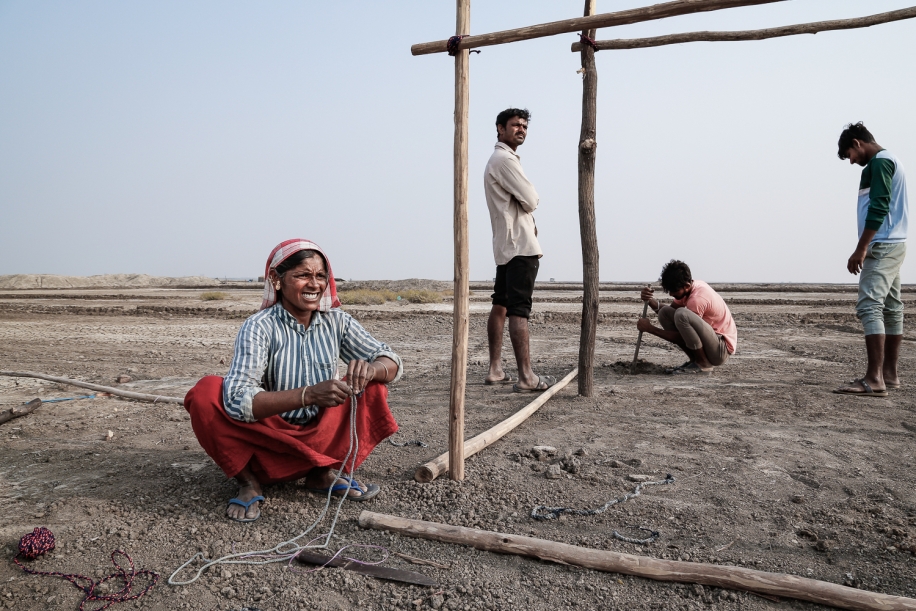

In the monsoon months, Rann of Kutch is submerged in sea water. As the water recedes from October, a community of salt cultivators known as the Agariyas (agar meaning salt), migrate to the desert every year from the 107 villages bordering the Kutch desert to start the salt farming, a seasonal activity that spans about six to eight months of the year. They carrying necessary belongings and supplies to the Rann where they build temporary houses
After monsoon season the Arabian sea recedes from Little Rann of Kutch, in the Indian state of Gujarat; it leaves behind vast amounts of salt water below the surface. This is when the Agariyas, a community of salt farmers who have worked on this land for centuries, arrive from nearby villages to produce salt from this annually-renewed source. They dig wells to pump out the briny groundwater and fill the fields where the natural evaporation process leaves behind white crystals. The Agariyas live for 7/8 months in temporary houses made from scraps of tarpaulin sheets and jute bags with wood framework beside their salt flats.
Up to 76% of India’s salt is produced on this land, but the Agariyas have for generations been compensated little for their labor, they earn an average of only 300 rupees ($ 3,60) per ton of salt even though the market price is 17,000 rupees per ton ($239).
Throughout their working lives, saltpan farmers encounter serious health hazards. Working in extreme temperatures without any protective gear against the intense sun and the salt, many Agariyas suffer eyes and skin damage.
Agariyas are facing a very diffcult period; despite five year back, the Gujarat government launched a scheme for installation solar pump system for the benefiting thousands of Agariyas with 80% subsidy, Gujarat government, with a letter on 21st February 2023, issued an order of evicting all those Agariyas who fail to prove their claims in the Little Rann.Little Rann of Kutch was declared a sanctuary in 1973 and technically became a forest, the forest department allegedly started harassing the Agariyas for using its land to make salt. The salt farmers claim they have been farming salt on this land for generations.
They have demanded customary seasonal user rights to farm salt in Little Rann of Kutch under the Forest Rights Act. They have submitted applications to local government bodies but have not heard anything yet.
The average land use by each salt farmer is about four or five acres and they claim that they do not use more than three per cent of the total land of the sanctuary. In 2013, the Gujarat government issued a resolution saying that the government has initiated the process to create Forest Right Committees in the area for this purpose. No action has been taken so far by the committees. About 5,000 square kilometres of Little Rann of Kutch has never been surveyed, so there is a lot of confusion about the ownership of this land. The Agariyas have also demanded minimum support price for the salt produced by them on par with agricultural farmers.
"Our demand will neither require conversion of any land into revenue land, nor will it divert any land from the protected forest area. Ours is a reasonable demand, leaving no reason for the government to deny it," a member of the Agariya community told the media
photogreg@libero.it
https://robertogregori.com
Make Comment/View Comments